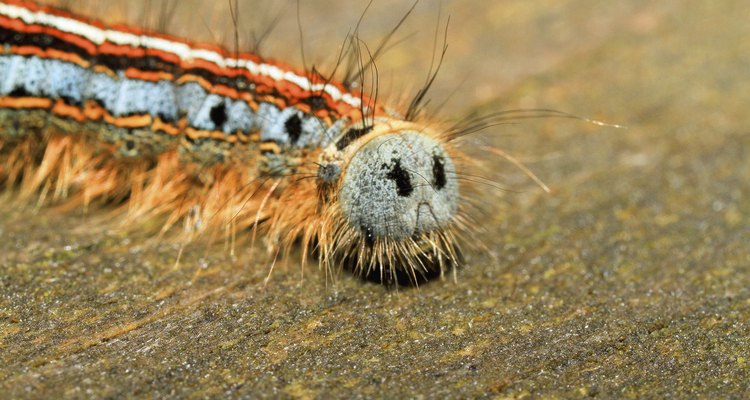
thomasmales/iStock/Getty Images
Michigan has over 2,000 different species of moths and butterflies. By knowing the kinds of caterpillars you are most likely to encounter, you can stay away from harmful ones and adequately protect your garden. Pointing out species of caterpillar to your children can be a great way to teach them about nature.
Butterfly Caterpillars
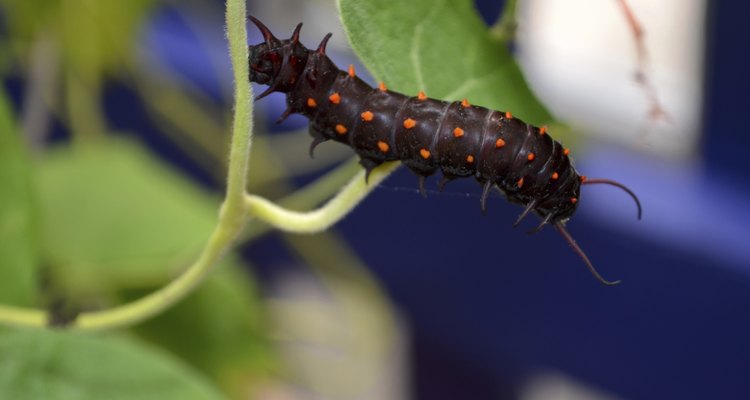
EvaKaufman/iStock/Getty Images
Butterfly and moth larvae are both called caterpillars and look very similar, but they are not identical. The best way of telling them apart is by looking at their prolegs. Prolegs are soft, unjoined legs they have in addition to their standard six joined ones.
All butterfly caterpillars are covered with fine hairs and have 5 pairs of prolegs. Some found in Michigan are:
The Pipevine Swallowtail - Spiky and rusty-brown with parallel rows of bright orange dots.
The Question Mark - Red and black, with coral-like spikes all over it.
The Atlantis Fritillary - Black and gold with black coral-like spikes.
The Buckeye - Black on top with blue specks and orange underneath.
Moth Caterpillars
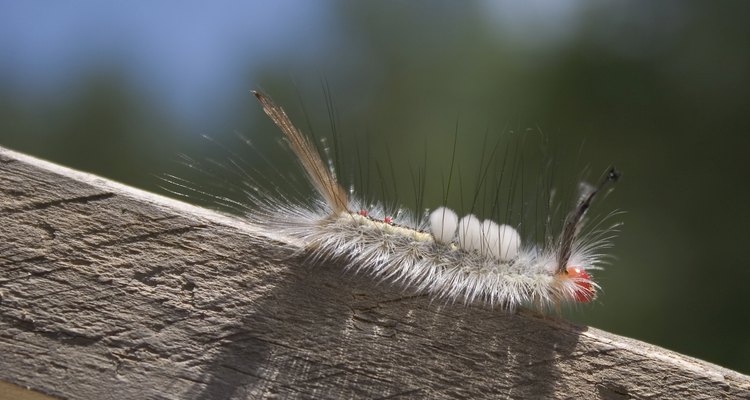
hilerm/iStock/Getty Images
Moth caterpillars have five or fewer pairs of prolegs or hair, but never both. Some found in Michigan include: - Gold Moth: Smooth and dull orange with black bumps and dots. - Abbotts Sphinx: Long, green, and brown with very fine hairs. - Wild Cherry Sphinx: Light green with a thin black and white stripe running diagonally through each body segment. - White-Marked Tussock Moth: A short and thin needle-shaped body with long white hair and white humps on the upper part of its back and long black antennae.
Poisonous
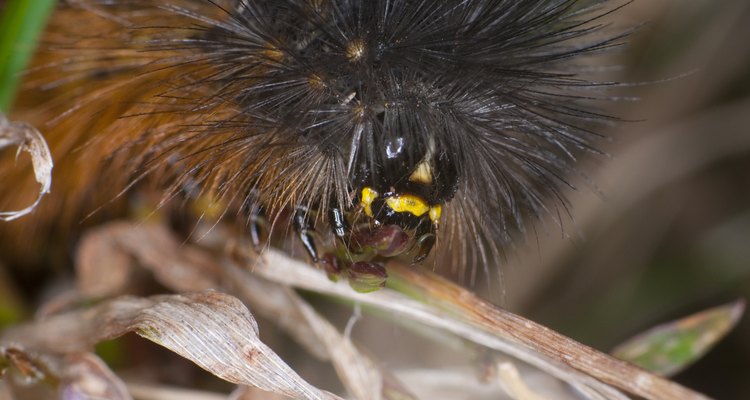
Derek Burke/iStock/Getty Images
There are around nine stinging caterpillars in the US, at least three of which can be found in Michigan. They are: - Eastern Buckmoth: Very spiky and black with rows of yellow/gold flower-looking spots. - Tiger Moth: Small with black and gold "fur" and long white hairs like spikes. - Io Moth: Young Io larvae are bright yellow, older ones light green, both have coal-shaped spikes. All species are typically found around late summer/early fall on deciduous trees. A sting can feel like a stinging or itching sensation and can best be guarded against by wearing gardening gloves and teaching children to avoid prickly or fuzzy caterpillars. If contacted, wash the area with soap and water, use Scotch tape to remove any remaining spines, and apply baking soda paste, ammonia, or calamine lotion.
Destructive
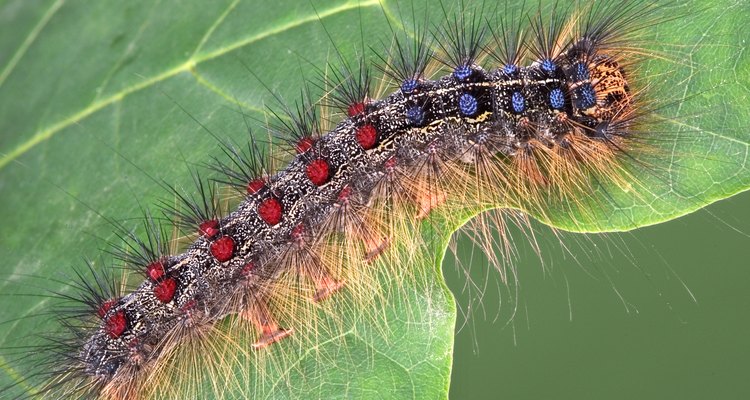
Cathy Keifer/Hemera/Getty Images
The two biggest caterpillar pests in Michigan may be the forest tent caterpillar and the gypsy moth. An especially big problem in northern Michigan, forest tents are long and green with an intricate black gold and white pattern on each segment of their back. Adults deposit thousands of egg masses on trees, which quickly consume all edible tissue on the tree upon hatching before moving on to the next thing. Gypsy moth caterpillars are well-known deforesters. They have pairs of red and blue spots across their backs and have long dark hairs from May to early June
Related Articles

Poisonous Household Spiders in ...
When Is Grapefruit Season in Florida?

Dangerous Spiders Located in Connecticut

Are Buckeyes & Chestnuts the Same?

Family Activities in Temperate ...

How to Tell if Nike SB Dunks Are Real

How to Remove Pecans From the Green ...
Things to Do With Kids in Long Island

How to Make a Swan Lake Headpiece

The Best Pepper Plants for Salsa

Golden Flax Seed Vs. Dark Flax Seed

List of Wild Edible Plants & Berries in ...

What Did Kids Wear in the 80s?
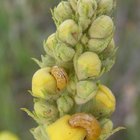
What Foods Attract Maggots?

How to Spot Fake Vans

San Diego Beaches With Shells
Fun Things to Do in Oregon With Kids

How to Julienne Jicama

Places to Pick Wild Blueberries in ...

Types of Edible Clams
References
Resources
Writer Bio
Derek M. Kwait has a Bachelor of Arts in English writing from the University of Pittsburgh and has been writing for most of his life in various capacities. He has worked as a staff writer and videographer for the "Jewish Chronicle of Pittsburgh" and also has training writing fiction, nonfiction, stage-plays and screenplays.
Photo Credits
thomasmales/iStock/Getty Images